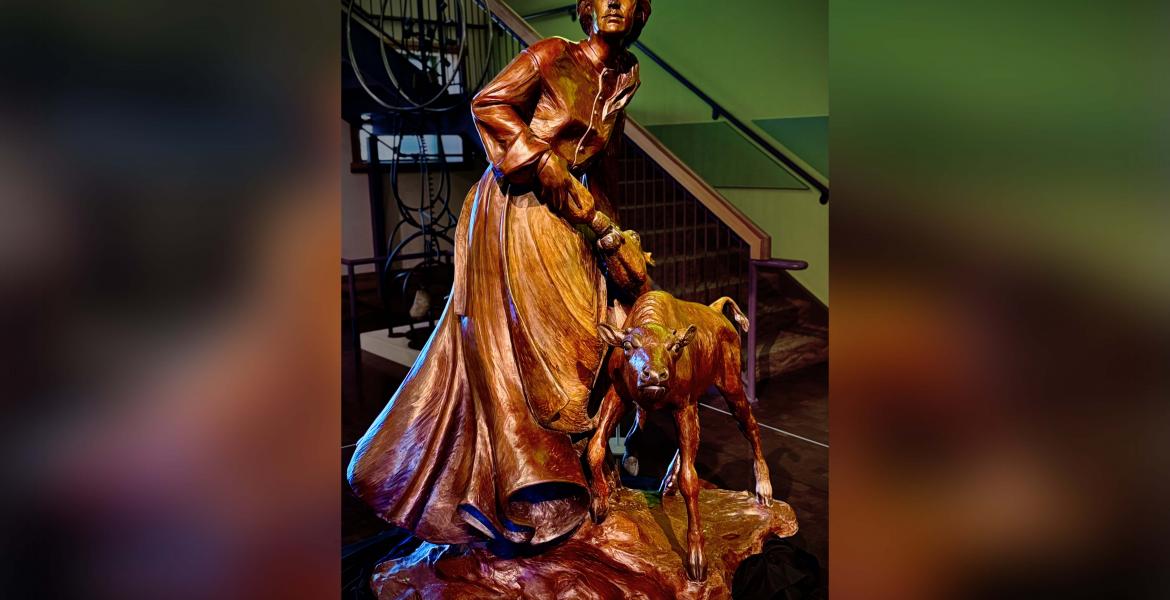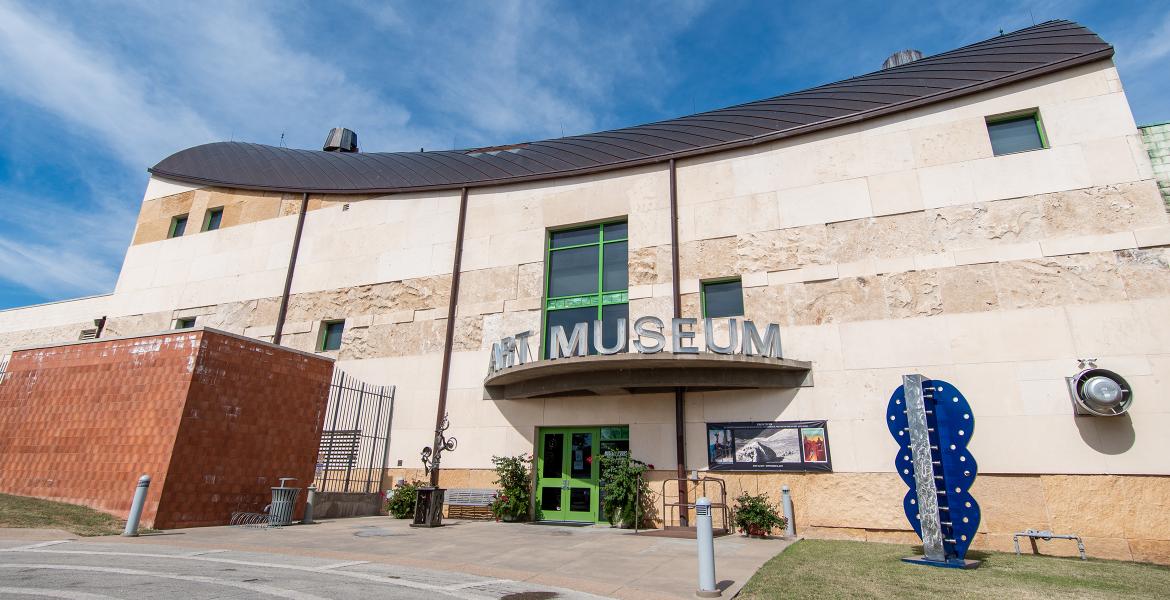SAN ANGELO “This is Drew Darby’s tree,” says Heather Ward, motioning to a tree towering at least seven feet tall that is covered with Beanie Babies from tip to trunk. “Actually, it’s my wife and girls’ tree,” Darby interjects. He happens to be standing right next to it. “You can’t imagine how many Happy Meals all of this is,” he says, giving away the source of all the brightly-colored animals.
Darby and a number of other local politicians and social workers mill about the large house on Koberlin St., snacking on cookies and Chex Mix and conversing in high spirit. They’ve come to shake hands with Senator John Cornyn, who’s flown in for the afternoon to meet with Marines and supportive community members and to unload a military truck full of bicycles, Barbies and boxes of other Toys for Tots.
“Every year we do a Christmas for Kids program, so we have individuals that sponsor children, and we also get a donation from Toys for Tots,” says Ward, Executive Director of the Children’s Advocacy Center (CAC) of Tom Green County.
Cornyn’s visit marks the handover of multiple toys for the center’s 350 participating children, but a visit from this specific Senator has a lot to do with mutual respect on the behalf of both parties.
“Senator Cornyn has…introduced a lot of legislation dealing with human trafficking,” says Cornyn’s Press Secretary. “The work being done in Tom Green County compliments the work he’s doing.”
On Nov. 19, Cornyn and colleagues introduced the Justice for Victims of Trafficking Act. A news release on Cornyn’s government website states the act “would boost support for and protection of victims of human trafficking by increasing law enforcement resources, enhancing victims’ services and increasing penalties in an effort to combat child sex trafficking, child pornography, sexual exploitation and human trafficking.”
The issue is particularly salient in Texas, says Cornyn, who cites reason in our location: “Unfortunately, due to our proximity to Mexico and South America, we know that we see a lot of human trafficking go through Texas,” Cornyn explains. “It is a reminder that we have to stay vigilant, not treat the victim necessarily as a criminal themselves…they need some help to break that cycle of victimization.”
The same press release puts the position in perspective. “Twenty-five percent of the victims of domestic human trafficking crimes are located in Texas,” the release reads.
As a team of individuals operating in four programs that seek to prevent abuse and neglect to children, the CAC deals with cases covering a broad spectrum of abuse, neglect and violence, including those that pertain to trafficking.
“We had one case in Concho County…a little girl had met a guy on Facebook,” Ward tells Cornyn upon arrival. “He befriended her, bought her a bus ticket and brought her down here. Somehow she escaped, and DPS was doing a routine check and happened to stumble upon the car that she was in. They found this little girl and this little girl disclosed what was going on, she continues.
“So they brought her up here at midnight and we did an interview. Texas Rangers came up, and…the forensic interviewer was able to get more specifics about the situation, more things about other victims, and we gave that information to the Texas Rangers and they quickly shut down that operation. He had an operation with several pimps, I guess you would call them,” Ward says, adding that it turned out to be a group of sex traffickers that were well organized.
The interview took place in a homey and moderate-sized room at the center. The walls have been painted in neutral tones and a table-tent shaped drawing easel has been placed beside a large sofa, just high enough for toddlers to stand or older children to sit and color. Two white half-sheets of paper are clipped on the board, each with the somewhat cartoonish black outline of a little boy or a little girl printed on it.
On the wall facing the sofa, a large, one-way glass window is bordered with a red fabric swag with a floral piece in the middle of it. A wooden table rests in front of the window, completing the living room-like look.
Here, Cornyn wants to know how Hope House Program Director Melody Jeter keeps her spirits up after hearing so many tragic stories from children.
“The way that I look at it is that we can’t change anything that’s happened to these children prior to their coming here, but hopefully this can stop and they can go on for a healthy, normal life from this,” Jeter says, then adds: “The holidays are a real hard time,” typically, the numbers go up, and that due to a number of factors. “Family stress, alcohol, domestic violence, blended families getting together that don’t get along, economic stress,” Jeter lists off a few. “Everyday things,” she concludes.
But even without the approach of the holidays the Children’s Advocacy Center is seeing a rise in cases. “We’ve had an influx in our population due to social media…we’re seeing more of the child pornography, more of the sex trafficking,” Ward tells a curious Cornyn. “The percentages are growing. The majority of our cases are still physical abuse, sexual abuse…”
Cornyn tours the rooms of the center, becoming familiar with the different programs offered as he is greeted in each door. Following several handshakes, the Senator heads outside for a few more, this time with Marines Sergeant Cortez and Private First Class Cortez—not related—and Toys for Tots Co-Coordinator Jill Vogsburg.
The trio intend to unload the truck parked in front of the house, but before the work gets started, a Marine pauses to share a story with those gathered in support of the community’s in-need families.
“I grew up in foster care—was in and out of foster homes,” says Sergeant Cortez. “During the holiday season, Marines would usually bring toys, and that was always kind of a treat, and I always looked up to them. That was part of the reason I chose to become a Marine,” he says proudly. When the option to participate in Toys for Tots came around, Cortez volunteered immediately, having been touched emotionally by the efforts of Marines before him.
Moving large, white boxes with the Toys for Tots train printed on the side in red, a healthy stock of Christmas gifts begins to collect in the center. By the time the toys have been unloaded and brought inside, a sizeable crowd has gathered for the Senator’s presentation.
The speech is short, but it’s message succinct: “We are in a period where most people are trying to gather with their families for Thanksgiving and Christmas, and I think it’s quite appropriate that we’re here today, and recognize the great work that’s being done in this community,” Cornyn says. “But I also recognize a great need…”
That need is hold onto hope and to work toward creating a brighter future. Cornyn remembers the words of Melody Jeter in the interview room.
“The most important thing overall is to remember at times like these, when we are blessed beyond our imagination, by our families and our loved ones, that there are those who need a hand-up and support during this season,” he says, thanking those present and the CAC for their support of the community.
This year, there are 350 children involved in the CAC’s Christmas for Kids program. Each child enrolled must also be a part of CAC’s Court Appointed Special Advocates or Family Enrichment Services programs.
The Children’s Advocacy Center also runs the Child Fatality Review Team and Hope House, the latter of which is comprised of a team of representatives that work together with law enforcement agencies, medical professionals and social workers to provide a warm and neutral environment for abused or neglected children brought in to interview.
“We have the forensic interview here, so it’s not as scary as the Police Department,” Ward says. Back at the Christmas tree, Drew Darby is still talking about his Beanie Babies.
“We took a family vacation one time in a motor home. We stopped at every McDonald’s from here to Florida. I’d walk up to the counter and say ‘I want 20 Happy Meals,’” Darby says, adding that they’d tried to purchase the toys without the meals, but had been denied. “I said, ‘just give me the Happy Meals,’ and I’d get all the Happy Meals and just hand them out to people in line.” Darby and his family did that all the way to Florida. He says it took quite a long time to get there.
A guesstimated 5,000 Babies later, Darby decided it was time to donate, and gave the entire collection to the Children’s Advocacy Center.
“What we do is when we have kids come for an interview at Hope House…we give them a Beanie Baby or a stuffed animal when they leave…it gives them a little comfort,” Ward says.
The Children’s Advocacy Center offers a wide range of services to children who are victims of a smattering of different crimes. For more information on their services, or to sponsor a child for the Christmas program call (325) 653-HOPE, email [email protected] or visit www.cactomgreen.org.
More photos from the event are posted on our Facebook page.
Subscribe to the LIVE! Daily
Required






Post a comment to this article here: